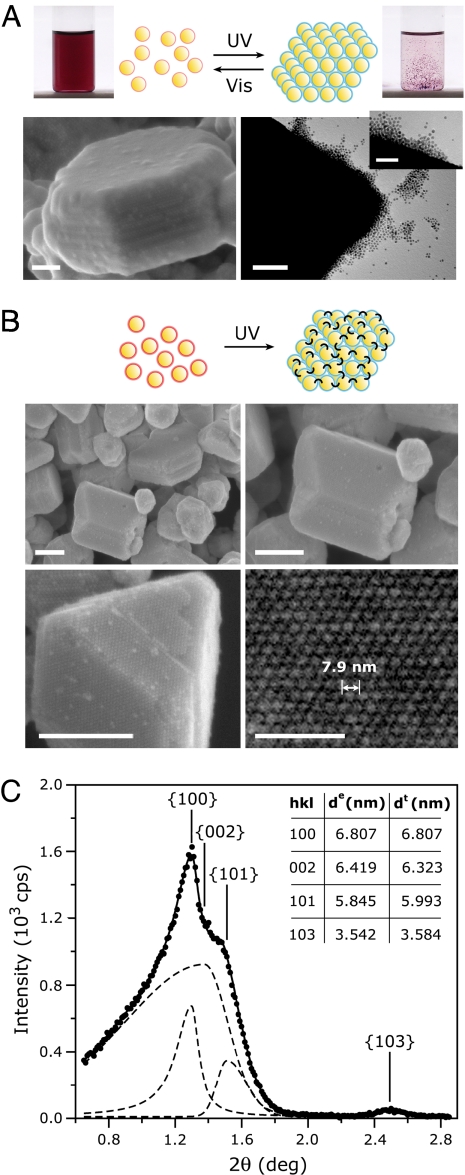Fig. 2.
LISA of reversible and irrreversible nanoparticle crystals. (A) (Upper) Reversible nanoparticle crystals form upon UV irradiation of AuNPs having low surface concentration of ADT ligands (thin, red halos). These crystals can be dissolved by exposure to visible light, and the light-induced assembly-disassembly cycle can be repeated multiple times. Pictures on the Left and on the Right show the same vial before (red solution of free AuNPs) and after (clear solution with dispersed black powder of crystals) LISA. (Lower) The SEM image on the Left shows a freshly prepared, faceted, reversible crystal. The TEM image on the Right shows how the crystal exposed to daylight for several seconds starts dissolving by detachment of individual NPs from its walls. (Scale bars: 100 nm in the main images and 50 nm in Inset.) (B) With higher concentration of ADT ligands (thick, red halos), the irradiated particles self-assemble and cross-link into irreversible, permanent crystals. The SEM images show crystals of various morphologies. (Scale bars: 200 nm.) (Lower Right) Magnified image of a hexagonal (100) face characterized by interparticle distance of 7.9 nm. (Scale bar: 50 nm.) (C) Small-angle powder XRD spectrum of the irreversible crystals. Solid line is the fit to experimental data (solid markers); dashed lines have the individual peaks resolved. The identified Bragg reflections on planes specified by Miller indices presented in Inset are characteristic of an hcp structure. Here, broadening of the XRD peaks is due to factors such as the finite size of the crystals, their mechanical deformations, defects, polydispersity of the constituent NPs, and the presence of residual amorphous phase.

